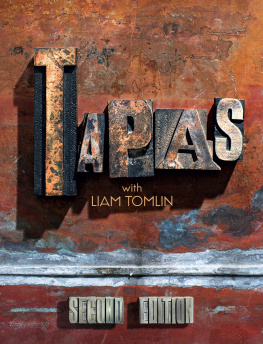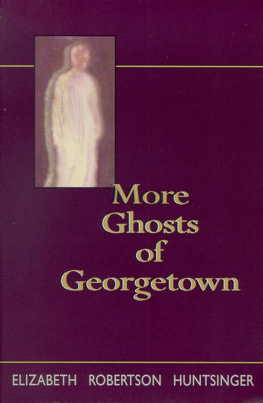For Sprout and Scout and the Peace River Ghost Trackers and a great time at the Spanish Military Hospital in St. Augustine, and Daena Smoller and Dr. Larry Montz with the ISPR, New Orleans, Louisiana, and the several great groups who do ghost tours in Key West, Florida.
Key West History Timeline
1513Ponce de Leon is thought to be the first European to discover Florida, which he claimed for Spain. His sailors, watching as they pass the southern islands (the Keys), decide that the mangrove roots look like tortured souls and call them Los Martires, or the Martyrs.
Circa 1600Key West begins to appear on European maps and charts. The first explorers came upon the bones of deceased native tribes, and thus the island was called the Island of Bones, or Cayo Hueso.
The Golden Age of Piracy begins as New World ships carry vast treasures through dangerous waters.
1763The Treaty of Paris gives Florida and Key West to the British and Cuba to the Spanish. The Spanish and Native Americans are forced to leave the Keys and move to Havana. The Spanish, however, claim that the Keys are not part of mainland Florida and were really North Havana. The English say no, the Keys are a part of Florida. In reality, this dispute is merely a war of words. Hardy souls of many nationalities fish, cut timber, hunt turtlesand avoid pirateswith little restraint from any government.
1783The Treaty of Paris ends the American Revolution and returns Florida to Spain.
1815Spain deeds the island of Key West to a loyal Spaniard, Juan Pablo Salas of St. Augustine, Florida.
18191822Florida is ceded to the United States. Salas sells the island to John Simonton for $2,000. Simonton divides the island into four parts, three going to businessmen John Whitehead, John Fleming and Pardon Greene. Cayo Hueso becomes more generally known as Key West.
1822Simonton convinces the U.S. Navy to come to Key Westthe deep-water harbor, which had kept pirates, wreckers and others busy while the land was scarcely developed, would be an incredible asset to the U.S. Lieutenant Matthew C. Perry arrives to assess the situation. Perry reports favorably on the strategic military importance but warns the government that the area is filled with unsavory characterssuch as pirates.
1823Captain David Porter is appointed commodore of the West Indies Anti-Pirate Squadron, known as the Mosquito Fleet. He takes over ruthlessly, basically putting Key West under martial law. People do not like him. However, starting in 1823, he does begin to put a halt to piracy in the area.
The United States of America is in full control of Key West, which is part of the U.S. territory of Florida, and colonizing begins in earnest by Americans, though, as always, those Americans come from many places.
Circa 1828Wrecking becomes a big business in Key West, and much of the island becomes involved in the activity. Its such big business that over the next twenty years, the island becomes one of the richest areas per capita in the United States. In the minds of some, a new kind of piracy has replaced the old. Although wrecking and salvage were licensed and legal, many a ship was lured to its doom by less than scrupulous businessmen.
1845Florida becomes a state. Construction begins on a fort to protect Key West.
1846Construction of Fort Jefferson is begun in the Dry Tortugas.
1850The fort on the island of Key West is named after President Zachary Taylor.
New lighthouses bring about the end of the Golden Age of Wrecking.
1861Florida secedes from the Union on January 10. Fort Zachary Taylor is staunchly held in Union hands and helps defeat the Confederate Navy and control the movement of blockade runners during the war. Key West remains a divided city throughout the great conflict. Construction is begun on the East and West Martello towers, which will serve as supply depots. The salt ponds of Key West supply both sides.
1865The War of Northern Aggression comes to an end with the surrender of Lee at Appomattox Courthouse. Salvage of blockade runners comes to an end.
Dr. Samuel Mudd, deemed guilty of conspiracy after setting John Wilkes Booths broken leg after Lincolns assassination, is incarcerated at Fort Jefferson, the Dry Tortugas.
As salt and salvage industries come to an end, cigar making becomes a major business. The Keys are filled with Cuban cigar makers following Cubas war of independence, but the cigar makers eventually move to Ybor City. Sponging is also big business for a period, but the sponge divers head for waters near Tampa as disease riddles Key Wests beds and the remote location makes industry difficult.
1890The building that will become known as the little White House is built for use as an officers quarters at the naval station. President Truman will spend at least 175 days here, and it will be visited by Eisenhower, Kennedy and many other dignitaries.
1898The USS Maine explodes in Havana Harbor, precipitating the Spanish-American War. Her loss is heavily felt in Key West, as she had been sent from Key West to Havana.
Circa 1900Robert Eugene Otto is born. At the age of four, he receives the doll he will call Robert, and a legend is born as well.
1912Henry Flagler brings the Overseas Railroad to Key West, connecting the islands to the mainland for the first time.
1917On April 6, the United States enters World War I. Key West maintains a military presence.
1919Treaty of Versailles ends World War I.
1920sProhibition gives Key West a new industrybootlegging.
1927Pan American World Airways is founded in Key West to fly visitors back and forth to Havana.
Carl Tanzler, Count von Cosel, arrives in Key West and takes a job at the U.S. Marine Hospital as a radiologist.















